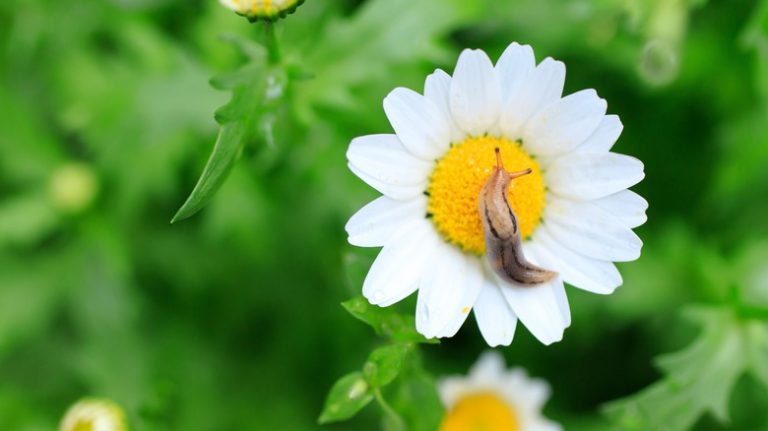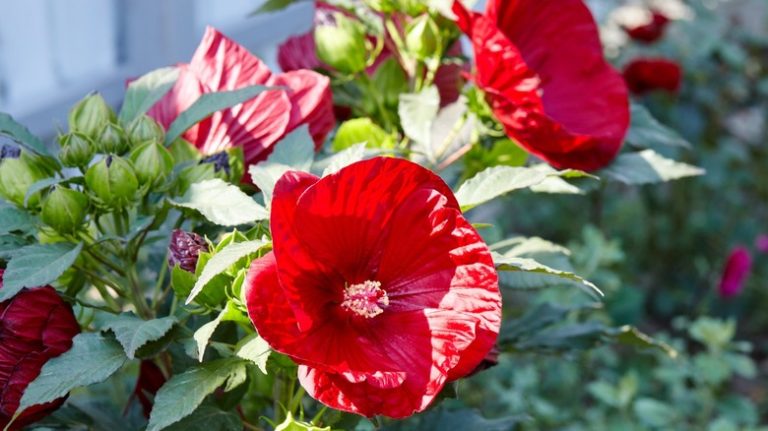Colchicum Autumnale, commonly known as autumn-crocus, is a perennial plant in the family Colchicaceae. It is native to Europe and parts of western Asia, and can be found in meadows, wetlands, and woodland habitats. This plant is often planted in gardens and parks due to its striking growth and beautiful flowers.
The Colchicum Autumnale is known for its unique characteristics. It has naked leaves, meaning they appear after the flowers have bloomed. The leaves are long and narrow, and the stem bears one or two blades. The flowers of the Colchicum Autumnale are vibrant and come in various shades of pink and purple, adding a pop of color to gardens in the autumn.
Autumn-crocus is also valued for its medicinal properties. The plant contains colchicine, a poisonous alkaloid that is used in the treatment of gout and other inflammatory conditions. However, caution should be exercised as the plant can be toxic if ingested. In addition to its medicinal value, the Colchicum Autumnale also has ecological importance as it provides habitat and food for wildlife, particularly butterflies.
Colchicum Autumnale is commonly found in North America, where it has become naturalized. It is often found in disturbed areas, such as roadsides and fields. The plant reproduces through seeds and plantlets, and sometimes through clonal growth. The autumn-crocus is known for its resistance to harsh weather conditions and can tolerate a wide range of temperatures, which explains its hardiness in various parts of the world.
Colchicum autumnale
Colchicum autumnale, commonly known as autumn crocus or meadow saffron, is a native woodland plant often confused with the crocus. It belongs to the Colchicum genus and is a member of the family Colchicaceae.
The plant grows from a corm, which is an underground stem. The leaves of Colchicum autumnale appear in spring, before the flowers. They are long, narrow, and green in color. The flowers are usually pink or purple, and they have no scent. The flowers shoot up from the stem in autumn, hence the name “autumn crocus”.
Colchicum autumnale is commonly found in meadows and woodlands. It can also be planted in gardens. The fruit of this plant contains small, round plantlets known as seeds. The seeds are often dispersed by animals, such as bears, that eat the fruit.
Colchicum autumnale has several interesting characteristics. It is a polyploid plant, meaning it has multiple sets of chromosomes. Its foliage appears in spring, while its flowers bloom in autumn, making it unique among flowering plants. The sap of the plant is highly toxic and can cause severe inflammation if it comes into contact with the skin. However, despite its toxicity, certain animals, like butterflies, are known to feed on the flowers.
In terms of conservation, Colchicum autumnale is not native to North America. Please note that information about its habitat and distribution in North America may not be accurate. However, in England, where it is native, there are efforts to protect and conserve this species and its wetland habitat.
In conclusion, Colchicum autumnale, also known as autumn crocus or meadow saffron, is a unique plant with distinct characteristics. Its stem, leaves, and flowers have valuable medicinal properties, despite the confusion with crocus. Its vivid autumn blooms and clonal growth make it an intriguing addition to gardens and natural habitats.
Colchicum Autumnale
Colchicum autumnale, commonly known as the autumn crocus or meadow saffron, is a species of flowering plant in the family Colchicaceae. It is native to Europe and parts of western Asia. The plant is known for its beautiful flowers, which appear in the autumn and can sometimes have a scent.
The plant has long, naked stems that bear flowers at their top. The stems arise from an underground stem called a corm. The corm is round in cross-section and has small glands on its surface that produce a sap. The leaves of the plant are long and narrow, and they appear in the spring before the flowers. The leaves commonly branch and can reach a length of up to 20 centimeters.
Colchicum autumnale is a polyploid species, meaning it has multiple sets of chromosomes. This characteristic can lead to the formation of new, clonal plantlets from the corm. The plant is also known for its fruit, which is a capsule that covers one or more seeds. The fruits are commonly found in wetland and woodland habitats, but can also be found in disturbed areas.
In England, Colchicum autumnale is native to wet meadows and is a protected species under conservation laws. In America, where it is not native, the plant has been introduced and can be found in some areas. It is a hardy plant that can tolerate a wide range of growing conditions.
| Common Name | Autumn crocus |
|---|---|
| Scientific Name | Colchicum autumnale |
| Family | Colchicaceae |
| Habitat | Wet meadows, woodland |
| Flowering Season | Autumn |
| Plant Characteristics | Naked stems, yellow flowers |
| Conservation Status | Protected in England |
| Fruit | Capsule with seeds |
| Toxicity | Poisonous |
For more information about Colchicum autumnale, please refer to reputable botanical sources.
Autumn Crocus
The Autumn Crocus (Colchicum autumnale) is a flowering plant native to Europe and North America. It is commonly planted in gardens for its attractive blooms and foliage. The plant typically bears a single stem with long, narrow leaves that emerge in the spring and die back in the summer. The stem then produces naked flowers directly from the soil in the late summer or early autumn.
The flowers of the Autumn Crocus are usually purple or pink in color, although white and yellow varieties also exist. They have six petals and are often mistaken for true crocuses, hence the name “Autumn Crocus.” The flowers have a sweet scent that attracts butterflies and other wildlife.
The Autumn Crocus is a perennial plant that reproduces through clonal growth rather than seeds. It forms plantlets, or bulbs, at the base of its stems, which can be separated and replanted to grow new plants. The plantlets can also spread naturally to cover a larger area.
Autumn Crocus has a unique growth pattern called polyploidy, which means its cells have multiple sets of chromosomes. This results in larger flowers and leaves compared to other crocuses. The leaves of the Autumn Crocus have parallel blades and a cross-section that is circular or slightly flattened.
The Autumn Crocus is sometimes confused with the Meadow Saffron (Colchicum autumnale) due to their similar appearance. However, the two plants belong to different families and have distinct characteristics. The Autumn Crocus is toxic when ingested and can cause severe poisoning if consumed. Therefore, it is important to be cautious when handling the plant, especially its sap and fruits.
In its native habitat, the Autumn Crocus is often found in meadows and disturbed areas. It prefers moist, well-drained soil and a sunny or partially shaded location. The plant is protected in some regions due to its conservation status.
In conclusion, the Autumn Crocus, also known as the Colchicum autumnale, is a beautiful flowering plant with unique characteristics. Its vibrant flowers and attractive foliage make it a popular choice for gardens. However, it is important to remember that the plant is toxic and should be handled with care. If you need more information about the Autumn Crocus or its habitat, please consult a reliable source.
Colchicum autumnale – autumn-crocus
Colchicum autumnale, commonly known as autumn-crocus, is a perennial plant native to Europe and Asia. It is often confused with the crocus due to its similar flower appearance, but it is not actually a crocus. This plant is also sometimes called “naked ladies” because it bears flowers without any leaves, hence the name “colchicum” which means “cut short” in Greek.
The flowers of Colchicum autumnale are a vibrant purple color and appear in the autumn, hence the name “autumn-crocus”. The plant has a dormant period in the summer months and then shoots up a stem with flowers in the autumn. The stem can reach a length of up to 6 inches and the flowers have a strong scent.
Colchicum autumnale is commonly found in meadows and wetland habitats, where it is native. It is also naturalized in other parts of the world, including England. The plant reproduces by producing plantlets on the stem that can be disturbed and planted elsewhere. It is important to note that all parts of the plant, including the sap, leaves, and fruits, are poisonous if ingested, so caution should be exercised when handling or consuming this plant.
Colchicum autumnale has some conservation value as it provides habitat for insects and other wildlife. The plant is also clonal, meaning that it can reproduce by producing new stems from the base of the plant. This allows the plant to spread and form dense colonies in its native habitat.
In terms of its characteristics, Colchicum autumnale has large, bluish-green leaves that cover the ground in the spring and early summer. These leaves eventually die back, leaving the plant’s flowers to bloom on naked stems in the autumn. The flowers have six petals and a cross-section with yellow blades and pinkish-purple petals. The fruit of the plant is a capsule that contains tiny seeds.
In summary, Colchicum autumnale, or autumn-crocus, is a perennial plant native to Europe and Asia. It is often confused with the crocus, but it is a distinct species. The plant has a dormant period in the summer and shoots up a stem with purple flowers in the autumn. It is commonly found in meadows and wetland habitats, where it provides habitat and food for wildlife. The plant is poisonous if ingested and should be handled with caution.
New England Distribution
The Colchicum Autumnale, commonly known as Autumn Crocus, is a perennial plant native to Europe and naturalized in North America. It is a member of the family Colchicaceae. In New England, this plant is often found in woodland habitats, meadows, and wetlands.
The plant grows from a clonal stem or branch system, with the stems reaching a length of about 6-12 inches. The leaves are long and narrow, often confused with those of crocus. The foliage is green during the spring and summer, but turns yellow in the autumn.
In late summer or early autumn, the Colchicum Autumnale produces pink or white flowers that emerge directly from the ground without any visible stem. The flowers have six tepals and are around 2-3 inches in length. They are a valuable food source for butterflies and other wildlife.
The plant’s growth form and color make it a valuable addition to meadow gardens. However, it is important to note that all parts of the plant contain toxic compounds, especially colchicum. Hence, caution should be taken to avoid any poisoning incidents. The sap of the plant can cause skin irritation as well.
Colchicum Autumnale reproduces both sexually and asexually. The plant produces seeds that are often found in naked form–without any protective fruit. It also produces small plantlets from the base of the stem, which can further contribute to its clonal spread. This clonal growth is facilitated by the polyploidy status of the plant.
Despite its naturalization in North America, the Colchicum Autumnale is not considered native to New England. However, its hardiness and attractive flowers make it a popular addition to gardens in the region. Its conservation value lies in providing food for wildlife and adding color to meadows and gardens.



